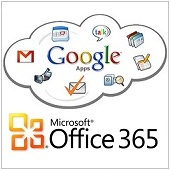Monitor and manage your reputation online using these online tools
Someone, somewhere could be talking about you or your company, and — depending on what’s being said — it can be either helpful or damaging to you or your business. This is of special concern in the online world, as the proliferation of websites and social media tools make it easy to share opinions with the world. In this article we point you to tools and online resources to help monitor and manage what’s being said about you or your business — and thereby build or defend your reputation. Besides your own eyes and ears, there are plenty of tools — for free or for a price — available to help you monitor your presence online. The simplest of these is your familiar search engines such as Google or Bing . By simply searching online, you can find where your name or your company’s name appears in various websites. With Google in particular, you can set up “alerts” which will email you when a specific word or term appears in their website index. What words or terms should you use? Start with your name, or your company name, then try the name of your products and/or services, and maybe even the names of your employees, directors, and other stakeholders. It might also be helpful to search for the competition as well. As results come in you can refine your search by expanding or narrowing the scope of terms you would like to search or be alerted on. If you want to be able to search across all different search engines and not just one or two, you can use Monitor This . Next you can use specialized website or social media monitoring tools to search only specific sites or services as opposed to the entire Internet. One example is Greplin , which allows you to search all of your accounts or accounts that you own. This is very helpful to be able to execute highly filtered searches on specific information in your Facebook, Twitter, or LinkedIn accounts, or your blog. Another option is Rollyo , which allows you to set up your own specialized search engines that cull content from public or open websites of your choosing. Other more generalized tools include RSS feed readers—which allow you to consume news or information feeds from news sites or blogs. Examples include Newsgator.com , Bloglines.com , Google Reader or Pluck.com . Other generalized tools include those that monitor specific newsgroups or message boards like BoardReader.com , ForumFind.com , Big-Boards.com , BoardTracker.com , iVillage , Yahoo Message Boards , and MSN Money . Still others track changes to content of specific sites ( Copernic Tracker , Website Watcher and WatchThatPage.com ), as well as their domain information ( DomainTools. com and BetterWhois.com ). The really interesting new services actually give you an explicit idea of the status of your reputation — especially if you are a relatively well known name or your business has an established brand. In this category are sites like Amplicate , which monitors general feelings or impressions about brands, businesses, or services; Klout , which tries to measure the influence of individuals based on their social interactions; and SendLove.to , which focuses on celebrities and media personalities. There are literally dozens more tools you can use to monitor and manage your reputation online. To find out more, a great resource is here at the Duct Tape Marketing blog . If you have any additional suggestions, feel free to let us know!











